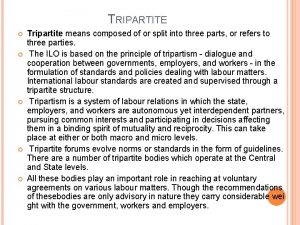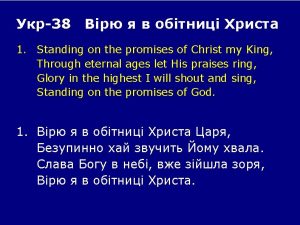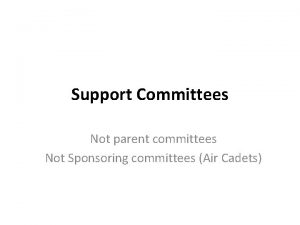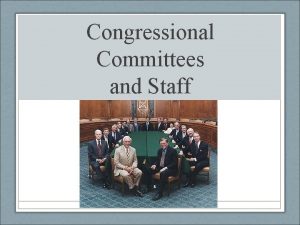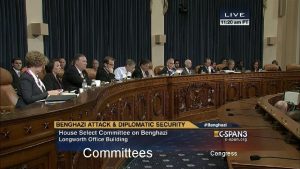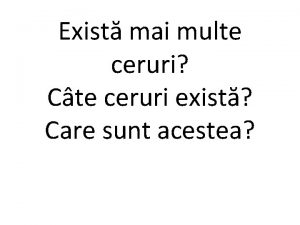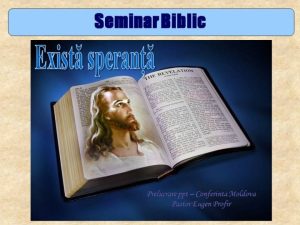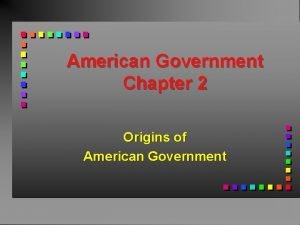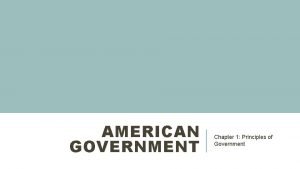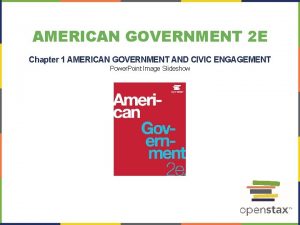American Government Standing committees are committees that exist















- Slides: 15

American Government

§ Standing committees are committees that exist from one Congress to the next § Standing committees are permanent subject matter committees where similar bills are sent for analysis and debate § Currently there are 19 standing committees in the House § House committees have between 10 and 75 members § Bills get their most consideration in these bodies § The leading committees in the House are the § Rules Committee § Ways and Means Committee (all revenue bills originate here, the means that tax bills are created in this committee)

§ Currently there are 17 standing committees in the Senate § Senate committees have between 14 to 28 members § In the Senate the leading committees are the: § Judiciary Committee (they approve Presidential judicial appointments)

§ Political issues are the types of things that Congressmen are supposed to fix through the passage of legislation § When politicians prioritize and decided on the types of legislation that they are going to pass, this is known as a policy agenda § A policy agenda can be impacted by a variety of things, including: § Public Demand § Presidential Priorities § Party Priorities § Environmental/Contextual Impacts

§ Public policies are addressed through the passage of bills. There a variety of types of bills in the U. S. They include: § Bill§ A bill is a proposed law § Public bill: § A public bill applies to the entire nation § Private bill: § A private bill applies only to certain people or places § In order for any official business to take place in Congress, there must be a quorum of Congressmen present § A quorum represents a majority of either Senators or Representatives in their respective houses

§ Introduction § The bill is first introduced in the House. § Committee action: § The bill is then referred to its respective standing committee § It then goes to a subcommittee for study, hearings, revisions, and approval § It then goes back to full committee for more hearings and revisions § The bill then goes to the rules committee where conditions for debate and the process for amendments is set § The rules committee can speed up, delay, or kill the legislation § Floor Action § Its then debated on the floor then passed or defeated. If its passed it then goes to the Senate

§ Senate § The bill is first introduced in the Senate. § Committee action § The bill is then referred its respective standing committee § It then goes to a subcommittee for study, hearings, revision, and approval § It then goes back to full committee for more hearings and revisions § In order to receive debate and a floor vote the bill must be placed on the calendar by the Majority Floor Leader § The bill is then debated then passed or defeated § If passed it then goes to the House

§ The House Rules Committee is known as the traffic cop § This committee screens bills before they reach the floor § This committee has the power to speed up, delay, or kill a measure § In the Senate the Floor Leader controls the appearance of bills on the floor in the Senate § The appearance of bills are scheduled on the calendar and can not reach the calendar without the approval of the Senate Floor Leader

§ A joint committee is composed of members of both houses § Some joint committees are investigative in nature and issue reports to the House and Senate, some are routine groups § Before a bill can be sent to the President it must be identical in both houses § A conference committee, is a temporary committee, that gets together to compromise on the bill

§ Conference Committee § The Conference Committee reconciles differences between House and Senate versions of a bill § Congressional Approval § The House and Senate vote on the final passage of the bill § The approved bill is then sent to the president § President § The President then signs the bill into law or the bill is vetoed § A Presidential veto can be overturned by two-thirds vote in each house in Congress § This is referred to as a legislative veto § When the bill is printed in its final form, it is referred to as being engrossed


§ Filibuster § The filibuster is a tactic used in the Senate whereby a vote on legislation can be delayed through debate § The longest filibuster was conducted by Strom Thurmond and lasted 24 hours § This tactic is rarely used in the traditional sense in today’s Senate § Generally if a filibuster is threatened (and the required number of Senators can’t be reached for cloture) the bill is returned to committee § Cloture § This is the voting process that can be initiated to end a filibuster. § It requires 60 Senators to cut off a filibuster

§ Pork Barrel Spending § This is the concept of passing legislation that will only benefit your constituency § Pork barrel spending is also referred to as earmarking or riders § Pork barrel spending is often referred to as wasteful spending by those who appose the process of earmarks and riders § Many times pork/earmarks/riders are added to bills because of political logrolling § Logrolling is similar to the concept of you scratch my back I’ll scratch yours

§ The vast majority of bills are pigeonholed in the law making process § This means that most bills are never introduced in a session of Congress and are buried away and never acted upon § There is a way in which pigeonholed bills can be pushed through the legislative process and that is through the use of the discharge petition § A discharge petition allows for the Representatives to force a bill onto the floor for a vote § This requires an absolute majority of Representatives to agree on the petition

§ Select committees are special committees § They are setup for a specific purpose and most often for a limited time § The Speaker of the House or the President of the Senate appoints the members of these special committees § They are normally setup to perform investigations into what type of legislation should be passed in order to take care of the countries’ needs
 Mikael ferm
Mikael ferm Compare the functions of joint and conference committees.
Compare the functions of joint and conference committees. Difference between standing crop and standing state
Difference between standing crop and standing state Sau thất bại ở hồ điển triệt
Sau thất bại ở hồ điển triệt Thơ thất ngôn tứ tuyệt đường luật
Thơ thất ngôn tứ tuyệt đường luật Hãy nói thật ít để làm được nhiều
Hãy nói thật ít để làm được nhiều Thơ thất ngôn tứ tuyệt đường luật
Thơ thất ngôn tứ tuyệt đường luật Tôn thất thuyết là ai
Tôn thất thuyết là ai Phân độ lown
Phân độ lown Walmart thất bại ở nhật
Walmart thất bại ở nhật Gây tê cơ vuông thắt lưng
Gây tê cơ vuông thắt lưng Block av độ 1
Block av độ 1 Tìm vết của mặt phẳng
Tìm vết của mặt phẳng Imperial wars and colonial protest
Imperial wars and colonial protest Effective safety committees
Effective safety committees Ilc and slc
Ilc and slc















